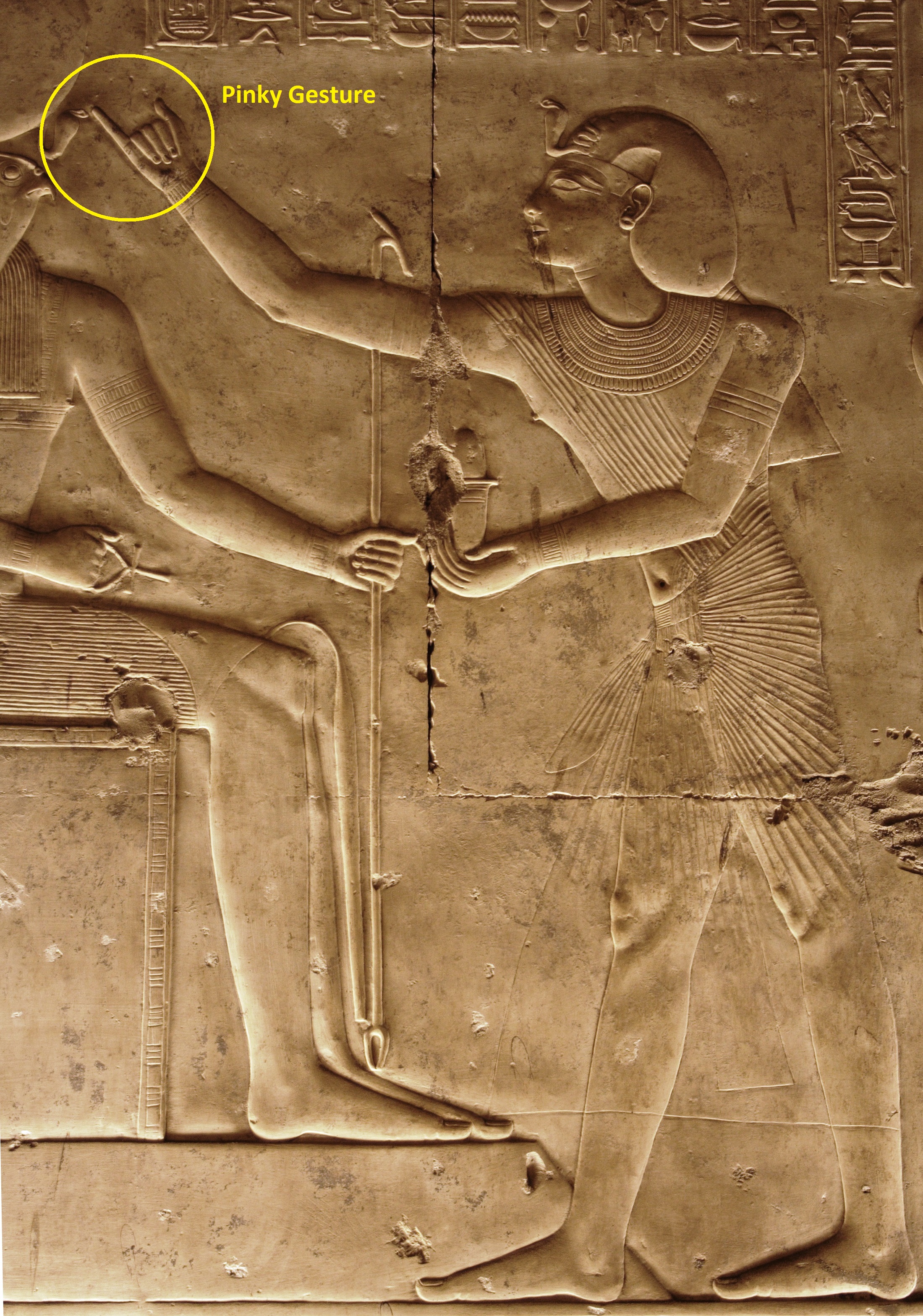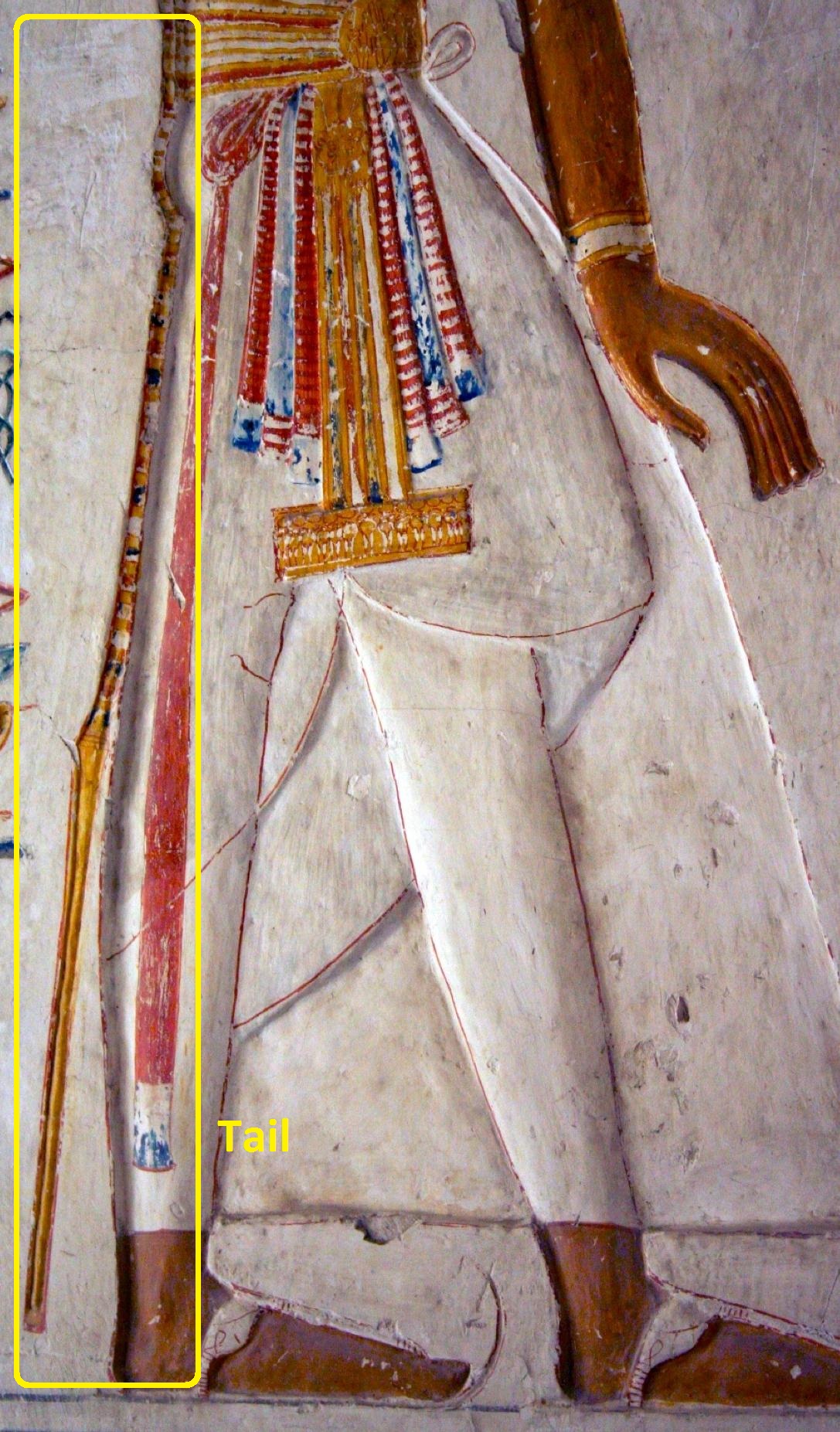by Art of Counting | Variable of the Day
Temple of Seti I at Abydos NOTE: This general term is used to record instances of skirts that include a sash tie at the front of the waist. There are several different configurations, including examples that have long sashes that hang down the sides and others (such...
by Art of Counting | Variable of the Day
Temple of Seti I at Abydos NOTE: Cloth offerings were presented as part of the Daily Cultic Ritual sequence. Texts often describe the king as ‘dressing’ the image of the deity with these textiles. Fabrics of different colors were featured, including...

by Art of Counting | Variable of the Day
Temple of Seti I at Abydos NOTE: This gesture, where the king extends his pinky finger, is used to apply ointment to a deity. In his other hand, the king holds the jar of ointment. Usually, the ointment is actually shown as being applied to the god’s uraeus...
by Art of Counting | Variable of the Day
Temple of Ramses III at Medinet Habu NOTE: Bound prisoners, particularly foreign foes, are a common sight in Egyptian temples. They usually appear in the lower courses of the relief or in scenes depicting the successful result of battle. Ethnically distinct...

by Art of Counting | Variable of the Day
Tomb of Ramses III (KV 11) NOTE: Personified emblems, often the ankh, djed pillar, and was scepter, appear first in the Predynastic period (such as on labels of king Narmer) and continue to be used throughout Egyptian history. Usually, these emblems with arms follow...

by Art of Counting | Variable of the Day
Tomb of Ramses VI (KV 9) NOTE: The tail worn by the king is one of the oldest elements of royal regalia. It appears on the Narmer Palette as well as on numerous other Early Dynastic objects (such as this ivory label of Den from Abydos). Usually, it is clearly...



